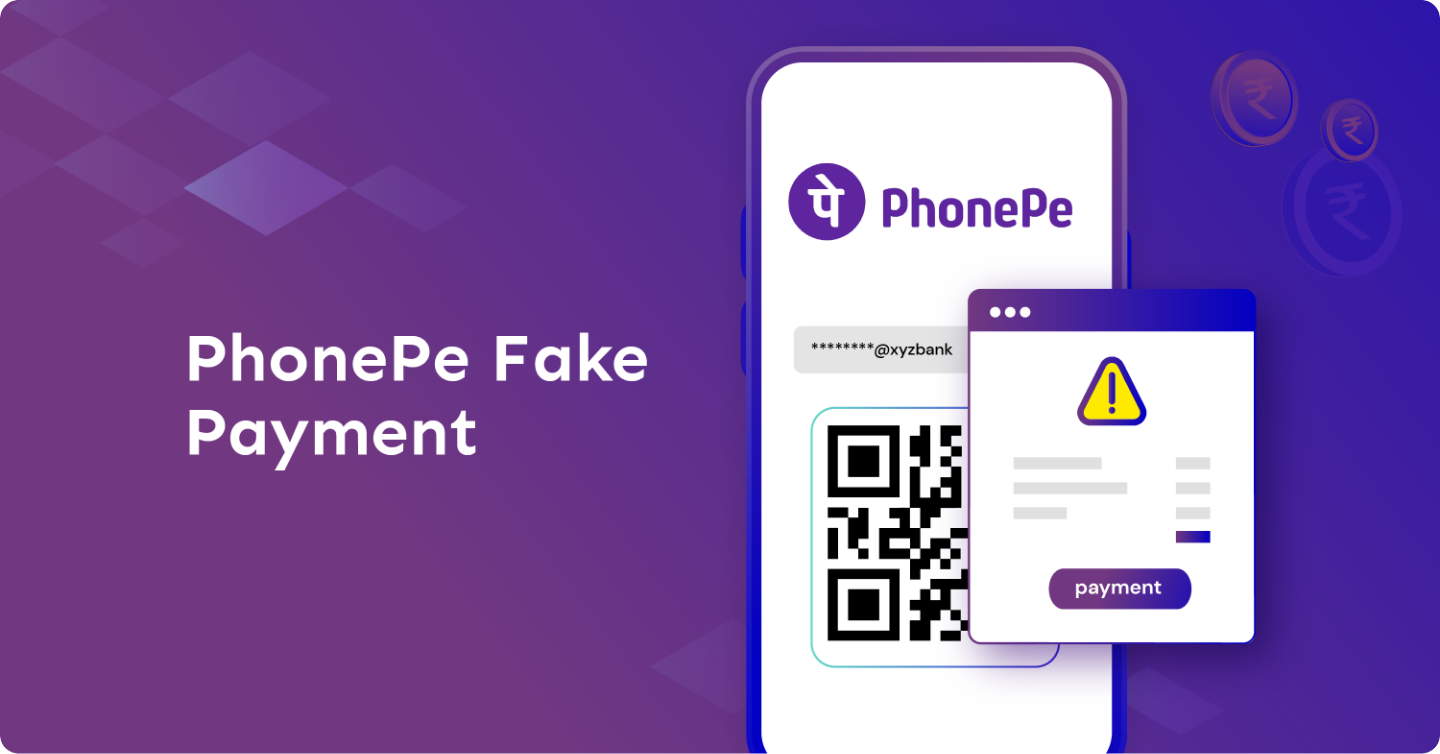CATEGORY - ECOMMERCE
PhonePe Fake Payment: 4 Red Flags to Protect Yourself
ECOMMERCE - 13 Jan 2024

-
Table of Contents
In the digital age, convenience reigns supreme. Gone are the days of rummaging through wallets for cash – a simple tap on your phone and voilà, your purchase is done. But this ease also opens doors for opportunists, weaving webs of deceit through cleverly crafted scams. One such trap ensnaring unsuspecting users is the “PhonePe fake payment” scam.
Phonepe fake payment: An anatomy of a scam
Imagine this: you’re selling a second-hand bike online. A potential buyer expresses interest, requesting a PhonePe transaction. They send you a screenshot, displaying a successful payment confirmation. Eager to close the deal, you hand over the bike, only to realize minutes later that the money never arrived. You’ve been duped by a fake payment screen.
These scammers employ various tactics:
-
Manipulated screenshots: They alter existing transaction confirmations or create fake ones using editing software. These screenshots often look convincing, mimicking the PhonePe interface and even including timestamps.
-
Urgency and pressure: Scammers prey on the seller’s eagerness to finalize the deal. They may create a sense of urgency, pushing you to accept the money without verifying it, often citing reasons like needing the product urgently or claiming limited availability.
-
Social engineering: Some may fabricate elaborate stories to gain your trust and bypass your skepticism. They could pose as family members, friends, or even potential employers needing urgent assistance.
The Red Flags
Before falling victim to such scams, learn to identify the red flags:
-
Always verify with your app, not screenshots: Never rely solely on the screenshot provided by the buyer. Open your PhonePe app and check your transaction history for the corresponding amount. If it’s not there, the payment is fake.
-
Suspicious requests: Be wary of buyers insisting on unconventional payment methods or requesting additional information beyond what’s necessary for the transaction.
-
Unrealistic offers: If the deal seems too good to be true, it probably is. Scammers often lure victims with exorbitant prices or urgent sales.
-
Grammar and spelling errors: Legitimate texts and communications from PhonePe will rarely, if ever, contain grammatical errors or typos.
Staying Safe in the Digital Jungle:
Here are some essential tips to keep yourself safe from PhonePe fake payment scams:
-
Never release goods or services before receiving confirmation: Always wait for the transaction to reflect in your app before completing the deal.
-
Double-check transaction details: Verify the sender’s name, amount, and transaction time for any discrepancies.
-
Beware of urgency and pressure tactics: Don’t rush into decisions due to urgency or emotional manipulation. Scammers thrive on your haste.
-
Report suspicious activity: If you encounter a suspected scam, immediately report it to PhonePe via their official channels, including the app, website, or customer care.
-
Educate yourself and others: Sharing awareness about these scams with friends, family, and online communities can help safeguard others from falling prey.
Beyond PhonePe:
Remember, while this article focuses on PhonePe, similar scams can occur across various online payment platforms. The general principles of staying vigilant, verifying transactions, and reporting suspicious activity remain crucial for your overall online safety.
By practicing caution and adopting these awareness tactics, you can navigate the digital jungle of online payments with confidence. Remember, knowledge is your shield, and vigilance your sword, ensuring that your financial transactions remain secure and scam-free. Stay safe, transact smart, and keep clicking confidently in the digital world!








